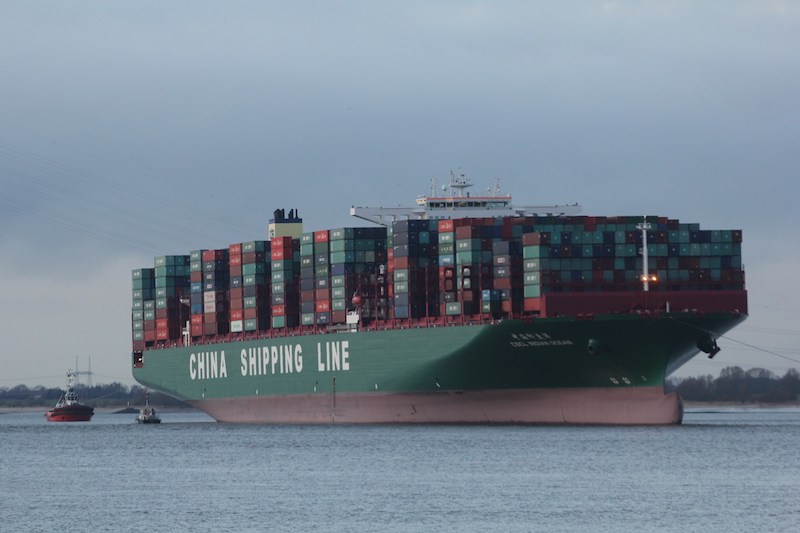Aground Megaship Pulled Free by a Dozen Tugboats
 Last Wednesday, one of the world’s largest container ships ran aground in Germany’s Elbe River.
Last Wednesday, one of the world’s largest container ships ran aground in Germany’s Elbe River.
The megaship has a capacity of 19,100 twenty-foot equivalent units (TEUs) and is longer than the Empire State Building is tall. In fact, it is so big that the ship is named after an entire ocean. The CSCL Indian Ocean ran aground on its approach to the Port of Hamburg.
Stuck in the sand of the riverbed, several attempts to dislodge the ship and get it back afloat failed.
According to a Bloomberg Business article, with the water level to rise 1.2 meters (approx. 3.94 ft.) above average because the Earth aligning with the Sun and Moon, an operation involving 13 tugboats to free the CSCL Indian Ocean was planned for Tuesday morning at 4am.
The operation actually started a couple hours earlier with one less tugboat, according to GCaptain.com:
The operation to refloat CSCL Indian Ocean began at precisely 2 a.m. when an army of 12 tugboats were simultaneously ordered to push and pull the 399-meter ‘megaship’ until it dislodged from the sandy riverbed.
By 2:06 a.m., the On-Scene Coordinator for Germany’s Central Command for Maritime Emergencies (CCME) radioed to the fleet: “the stern of the vessel has been towed off the bank”. By 2:20 a.m., the CSCL Indian Ocean was fully afloat and back in the shipping channel leading to the port of Hamburg. The vessel was later towed the port by five tugs and tied up at Eurogate Container Terminal Predöhlkai.
AIS used VesselTracker to create an animated replay of the operation:
Yes, footage of the actual tugboats pulling the giant container ship free would have been cooler. But it’s easy to see how big of an operation getting the ship afloat really was. Actually, that was only the tip of the iceberg of how big the operation really was.
A great deal of work went into the lead-up to this operation. Here’s more from the GCaptain article:
Since the grounding of CSCL Indian Ocean last Wednesday night, crews have worked to lighten the ship and dredge soil from around the vessel in preparation for Tuesday morning’s salvage attempt, when an extra-high spring tide meant high water more than one meter above average.
In the four days leading up to the refloat, the ship was lightened by more than 6,500 tons through the removal of heavy fuel oil, gas and ballast water, while dredgers removed 65,000 cubic meters of soil from around the grounded ship. Twenty-six vessels and pollution control aircraft were involved in the operation since it was handed over to the CCME after initial attempts to refloat the ship that first day were unsuccessful.
Around the world, dredging, construction, and reconstruction projects are happening to make waterways and ports able to handle the megaships that are taking over international shipping. But with ships the size of skyscrapers being navigated through oceans, rivers, and canals, should more incidents like this be expected?
Outside of long delays on thousands of shipping containers, the story of the CSCL Indian Ocean is happy. There does not appear to be major damage to the ship, nor pollution to the river through things such as oil spillage. However, imagine a megaship going down or being lost.
Putting aside the danger to life and possible pollution, a disaster involving only one ship the size of the CSCL Indian Ocean could potentially cost the loss of 19,000 plus TEUs of shipping containers.
It again brings to question how good these giant ships really are for the international shipping industry.
![]()
Source: UC Blog




